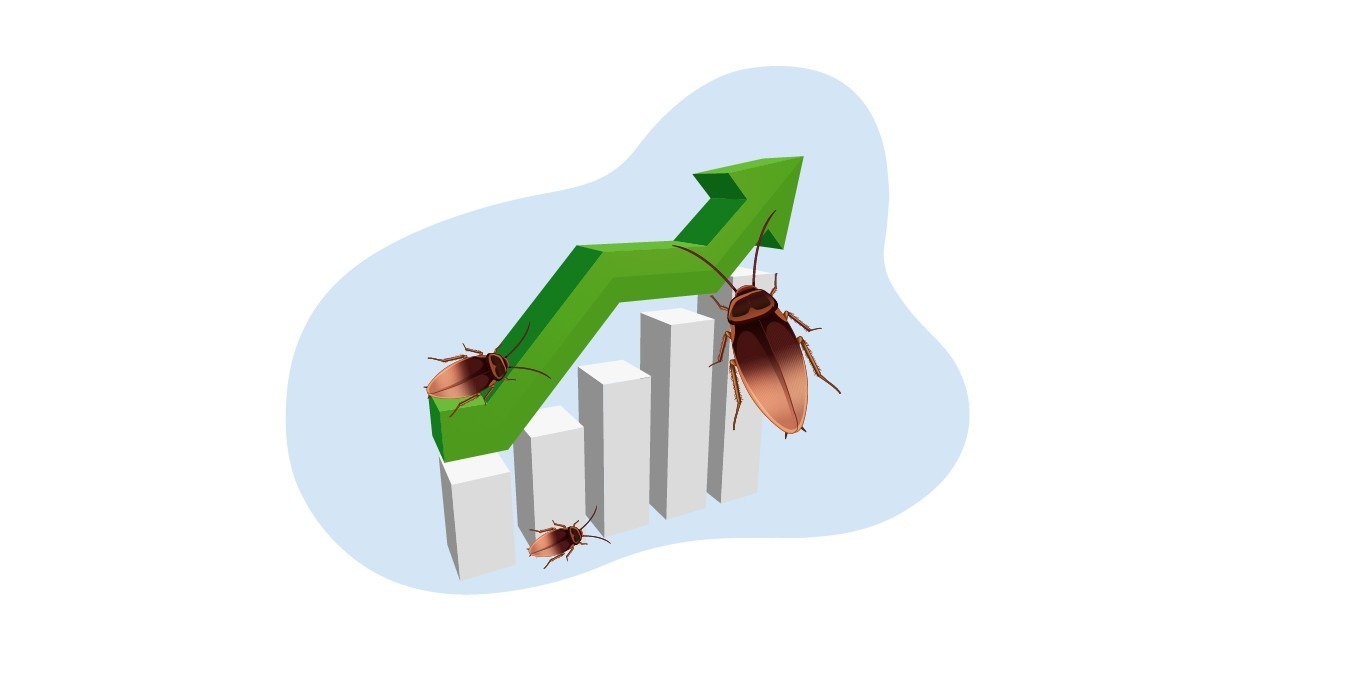As a child, my greatest fear was the fear of cockroaches which prevented me from doing a lot of things such as walking near those areas of the house where I had spotted cockroaches before.
Although I have overcome the phobia of cockroaches a long time ago, I still hate them because they are disease transmitters and very difficult to get rid of.
But the worst part is their ability to multiply at an alarming rate. Which means if you see one around, it probably means just the tip of an iceberg. The chances of a few hundred cockroaches somewhere nearby are very high.
Stock markets too have a connection with cockroaches. It is called the cockroach theory of investing.
Cockroach Theory In The Parlance Of Equity Investing
Just like spotting a single cockroach means there are many more cockroaches around, the cockroach theory in investing states that when a company reveals bad news to the public, many more related, adverse events may be revealed in the future. Negative news could be in the form of missed earnings, a lawsuit, or some other unexpected, undesirable event.
Further, the theory states that the situation could affect both companies as well as sectors. As investors may have second thoughts on their other investments in the same industry because of bad news, the cockroach theory tends to have an adverse impact on the entire market.
The best example of this is the IL&FS crisis of 2018.
I am sure you might have heard and read about it a lot over the last two years. Let’s take a look at how the IL&FS crisis serves as the best example of the cockroach theory in investing.
Somewhere around the 10th anniversary of the failure of Lehman Brothers resulted in the global financial crisis in the year 2008, India’s major infrastructure finance company, Infrastructure Leasing & Finance Services (IL&FS) started defaulting on its payments to its lenders triggering panic in the markets.
IL&FS is the holding company of the IL&FS Group, which comprises of several companies with expertise across infrastructure, finance, and social and environmental services and has several institutional shareholders like LIC, HDFC, SBI, CBI etc.
The first cockroach in this case…
As a result of failure on the part of IL&FS in meeting its payment liabilities of bank loans, commercial paper redemption obligations, and term deposits due on 14th September 2018; the company reported that it had received several notices for delays and defaults the next day.
The second cockroach….
Post the defaults by IL&FS, rating agency ICRA downgraded the ratings of its short and long-term borrowing programs as it was obvious that the defaults also put at risk the money investors (retail investors, banks, and MFs) associated with IL&FS.
The third cockroach….
The defaults by IL & FS led created panic among stock market investors who started dumping stocks of non-banking financial companies (NBFC) on a large scale. Market sentiments turned negative for such companies with even share prices of well-established giants like Bajaj Finance taking a big hit.
The other cockroaches…
The spillover effect of correction in NBFC stocks was also witnessed in other sectors with an overall market sentiment turning bearish. As a result, the benchmark index BSE Sensex corrected from a high of 38,934.35 in Sept 2018 to a low of 33,291.58 in Oct 2018 after the IL&FS crisis came to light. Over the next few months markets were very volatile and only in Mar 2019, Sensex could reach near its Sept 2018 levels.
Important takeaways from the cockroach theory in investing
The cockroach theory in investing is based on a simple fact – that a company’s fortunes are dependent on both external and internal forces. In simple terms just like when you see one cockroach, there are likely to be many more unseen cockroaches somewhere nearby. When a company is affected negatively affected by external forces, it is unlikely that similar companies in the industry where it operates will remain unaffected. Consider the case of the telecom sector in India. Just a few years back there were as many as nine private sector telecom operators in India. Today there are only three companies.
A dip in earnings, especially for more than one company in a particular sector is a matter of concern.
External forces can affect any company or industry. Still, an investor should be extra-cautious if the company’s management team is trying to downplay the effects of any bad news, to avoid falling into value traps. Remember Yes Bank?
The best way to get rid of cockroaches in our houses is to prevent their access to things crucial for their survival such as food and water. Despite this, if things go beyond our control, it is time to seek professional help. Similarly, the ideal way to get rid of cockroaches in the stock market is to properly diversify your portfolio, reducing over-exposure to a particular stock or sector. And don’t hesitate to seek expert help before things go out of control.
For expert help in creating a winning portfolio of 20-25 multibagger stocks that can multiply your wealth by 4-5 times in 5-6 years click here.
How useful was this post?
Click on a star to rate it!
Average rating 0 / 5. Vote count: 0
No votes so far! Be the first to rate this post.

